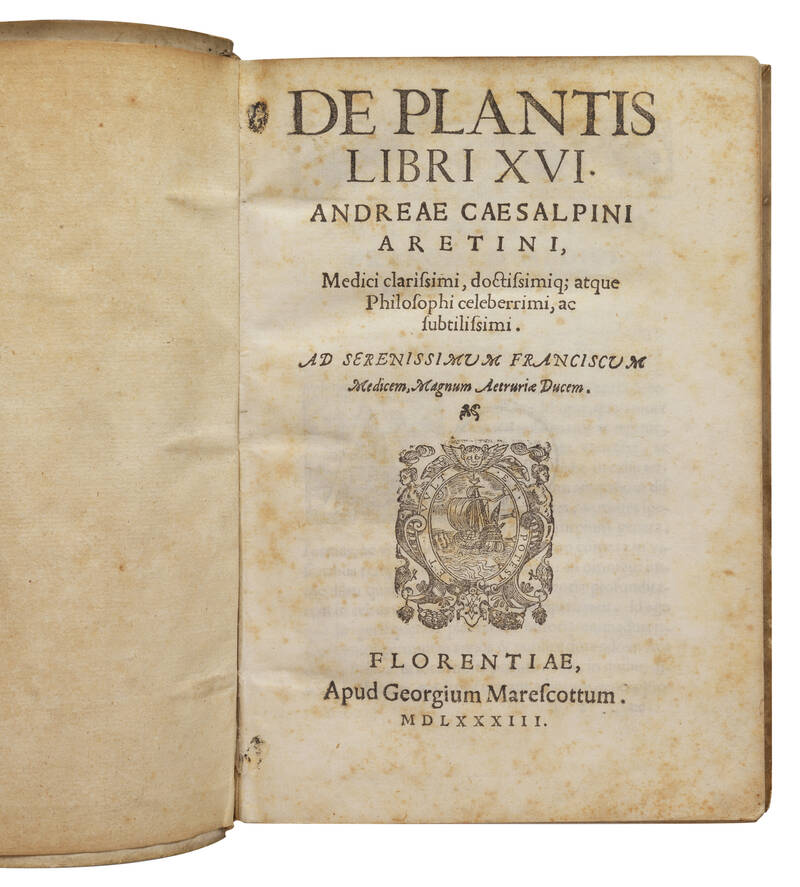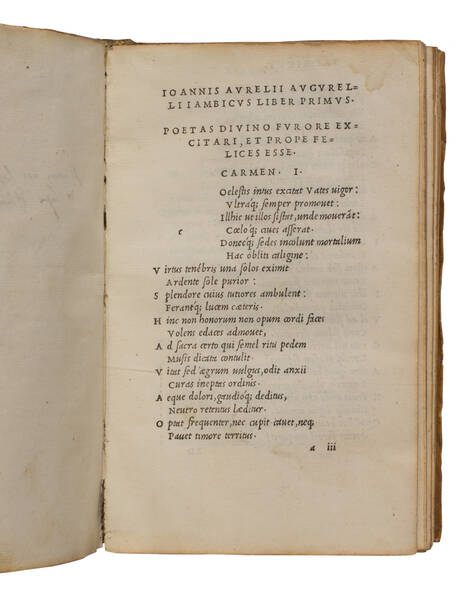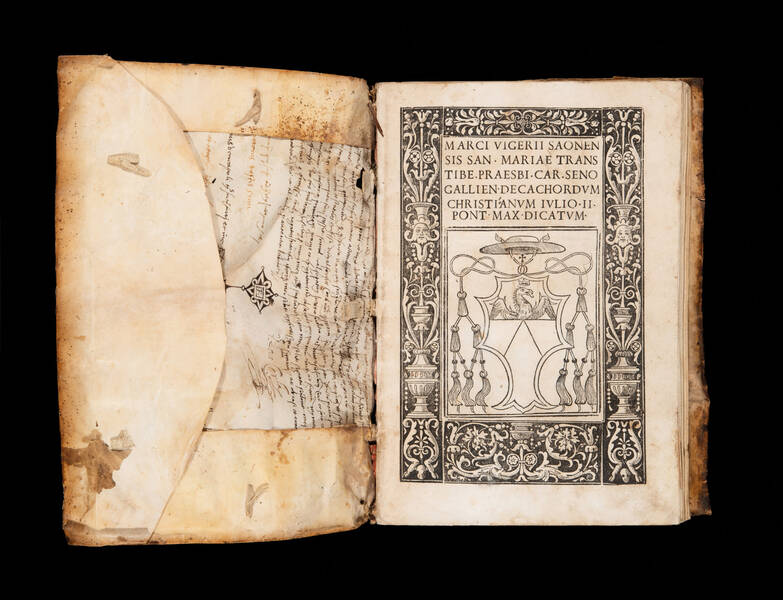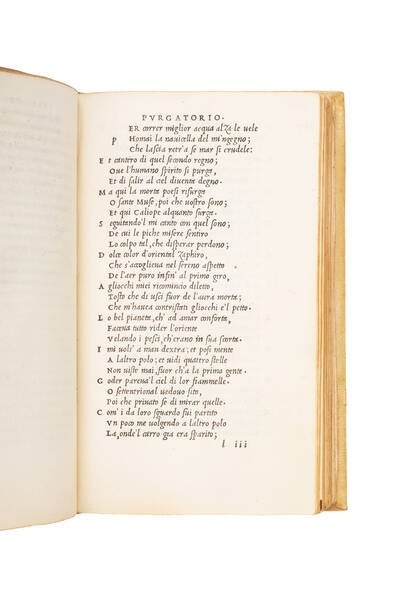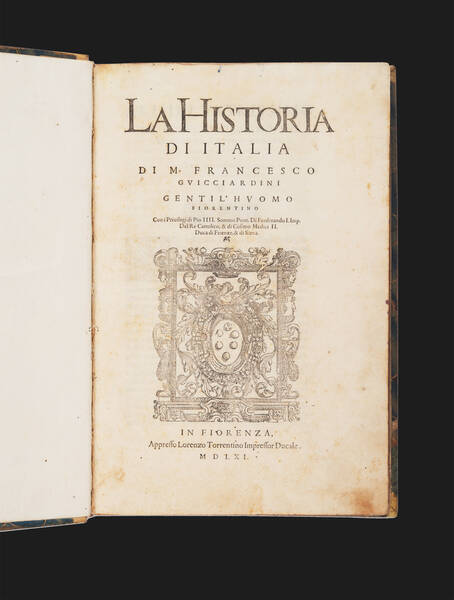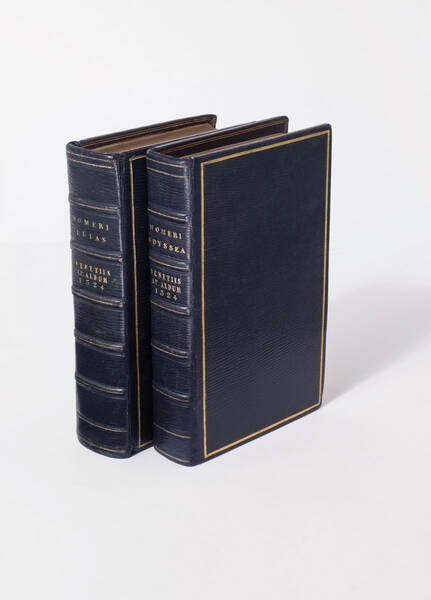CESALPINO, Andrea. De plantis libri XVI.
Florence, Giorgio Marescotti., 1583.Quarto (225 x 151 mm), [20] leaves, 621pages, [5] leaves, with woodcut printer's device on title and final page. Contemporary vellum dated 1585, manuscript title on spine. Light foxing at the beginning, a few small spots, a very good copy from the Library of Regii Gymnasii Joachimici (stamp on title verso).
First edition of the foundation text of Systematic Botany, the first true textbook of botany.'During the Middle Ages and the early Renaissance botanical literature was largely confined to herbals closely related to pharmacology and books restricted to the botanical knowledge of the ancients. With the knowledge of new fauna and flora coming into Europe from the New World and the East, and the creation of new botanical gardens, the need was felt for a more scientific classification of plants. Illustrations and descriptions of plants followed at first a natural pattern, based on their form and structure, naming as many characteristics as possible and classifying them accordingly. With Andrea Cesalpino a new era begins. […] His book De plantis was the first attempt to classify plants in a systematic manner based on a comparative study of forms; a similar study had been made by Gesner but was not published until the eighteent century. The traditional division into trees, shrubs, half-shrubs and herbs is retained, but they are now subdivided into different categories according to their seed, fruit and flower. The first section contains the general system, while the other fifteen sections describe 1,520 plants in fifteen classes. Cesalpinus's philosophy is Aristotelian: plants have a vegetable soul which is responsabile for nutrition and for the reproduction of organisms. Nutrition was belived to come from the roots in the soil and to be carried up the stems to produce the fruit. Hence, the roots, stems and fruits are the main characteristics selected by Cesalpinus as the basis of his classification. His descriptive terminology was finally based on the fruits of plants. Lower plants such as lichens and mushrooms, having no reproductive organs, were believed to arise by spontaneous generation from decaying matter. They were placed at the lower end of the hierarchy of plant, providing the link between plants and inorganic nature. Sex in plants had not yet been discovered; and leaves were considered simply as a protection for the seed. […] Imperfect a sit was Cesalpinus's was the first rational system of plant classification by which their ever-growing number (six thousand were known in 1600…) could be described. (PMM). Cesalpino's ‘ideas governed the development of botany in the 17th century and his influence estende into the 18th. He was perhaps the first great theorist in botany … The doctrine of metamorphosis, later expounded by Linnaeus and Goethe and through them leaving a heavy imprint on modern botany, was a part of Cesalpino's philosophy. He was the first to describe in accurate detail the parts of flowers, seeds and fruits, and based his analytical classification on these parts. He was perhaps to first to wrestle in print with the concept of species; and his solution like those of many modern botanists, was based on the capacity of a group to reproduce its kind'.(Hunt, Catalogue of botanical books, pp. Xxvii-xxviii).
PMM 97; Norman 432; Dibner herald of Science 20.
Other Books
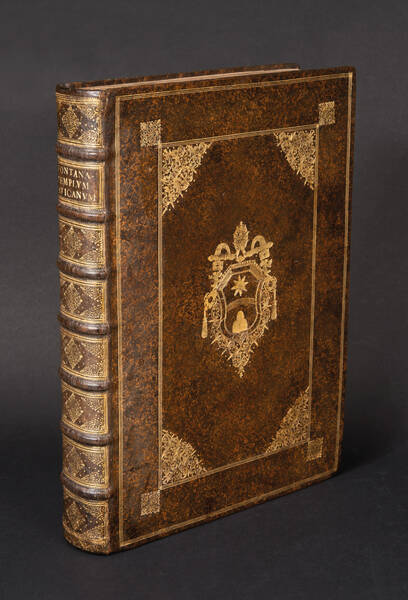
FONTANA, Carlo
Templum Vaticanum et ipsius origo cum aedificiis maximè conspicuis antiquitùs, & recèns ibidem constitutis; editum ab equite Carolo Fontana ... opus...
€ 38.000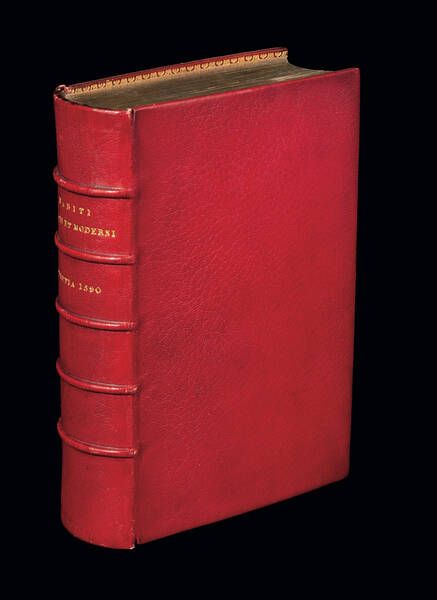
VECELLIO, Cesare
Degli Habiti Antichi, et Moderni di Diverse Parti del Mondo Libri due, fatti da Cesare Vecellio, & con Discorsi da Lui Dichiarati.
SOLD OUT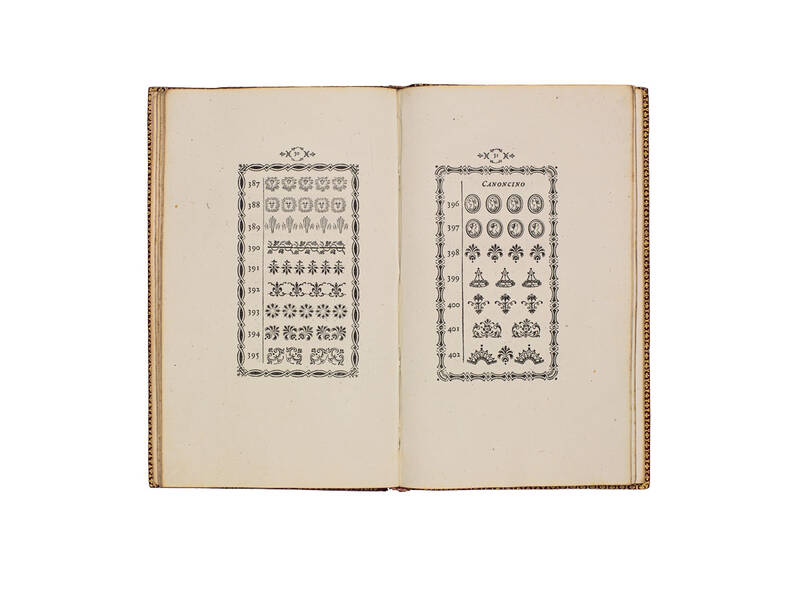
[BODONI]
Fregi e Majuscole incise e fuse da Giambattista Bodoni direttore della Stamperia Reale
SOLD OUT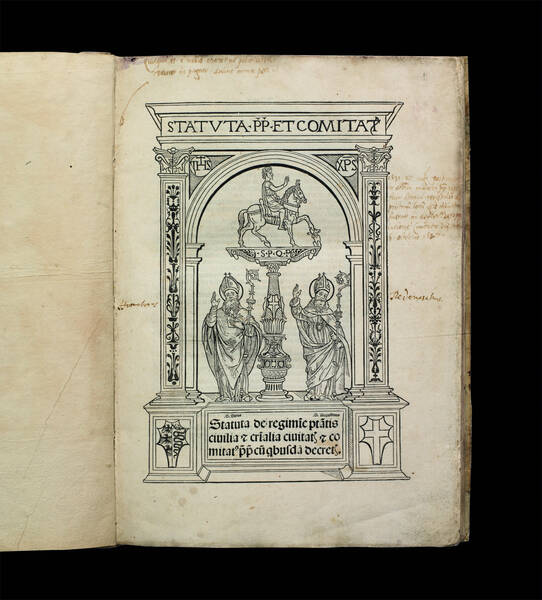
[PAVIA, Statuti]
Statuta Papiae et comitatus. Statuta de regimine potestatis ciuilia & criminalia ciuitatis & comitatus Papiae cum quibusdam decretis.
SOLD OUT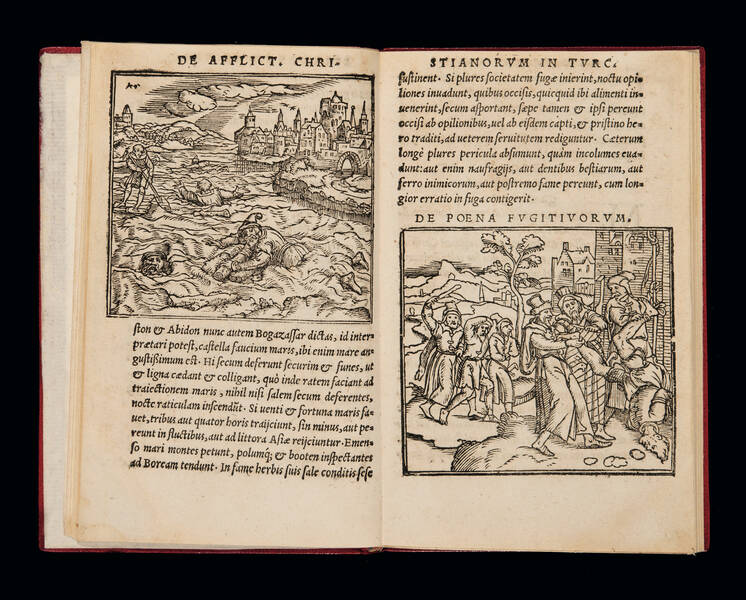
GEORGEVIC, Bartolomej
De afflictione, tam captivorum quam etiam sub Turcae tributo viventium christianorum.
SOLD OUT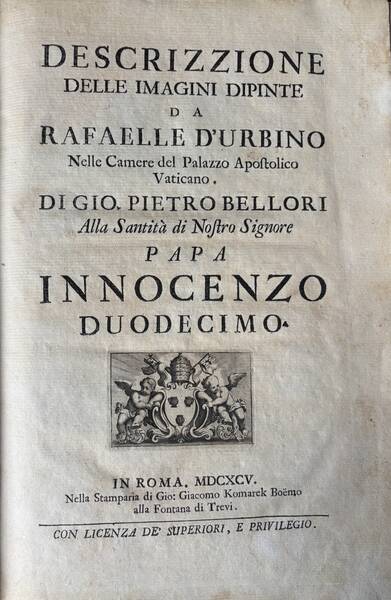
BELLORI, Giovanni Pietro
Descrizzione delle immagini dipinte da Rafaelle d'Urbino nelle camere del palazzo Apostolico Vaticano.
€ 2.500![La zucca del Doni. [Fiori della zucca del Doni; Foglie della zucca del Doni; Frutti della zucca del Doni.] La zucca del Doni. [Fiori della zucca del Doni; Foglie della zucca del Doni; Frutti della zucca del Doni.]](https://www.medariquier.com/typo3temp/pics/efd2a7667b.jpg)
DONI, Anton Francesco
La zucca del Doni. [Fiori della zucca del Doni; Foglie della zucca del Doni; Frutti della zucca del Doni.]
€ 7.000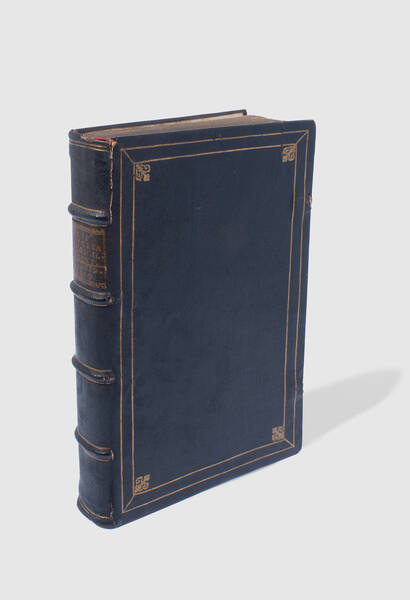
SARPI, Paolo
Historia del concilio tridentino di Pietro Soave Polano. Nella quale si scoprono tutti gl'artificii della Corte di Roma, per impedire che né la...
SOLD OUTMEDA RIQUIER rare books ltd.
4 Bury Street St James's
SW1Y 6AB London
Phone +44 (0) 7770457377
info@medariquier.com
